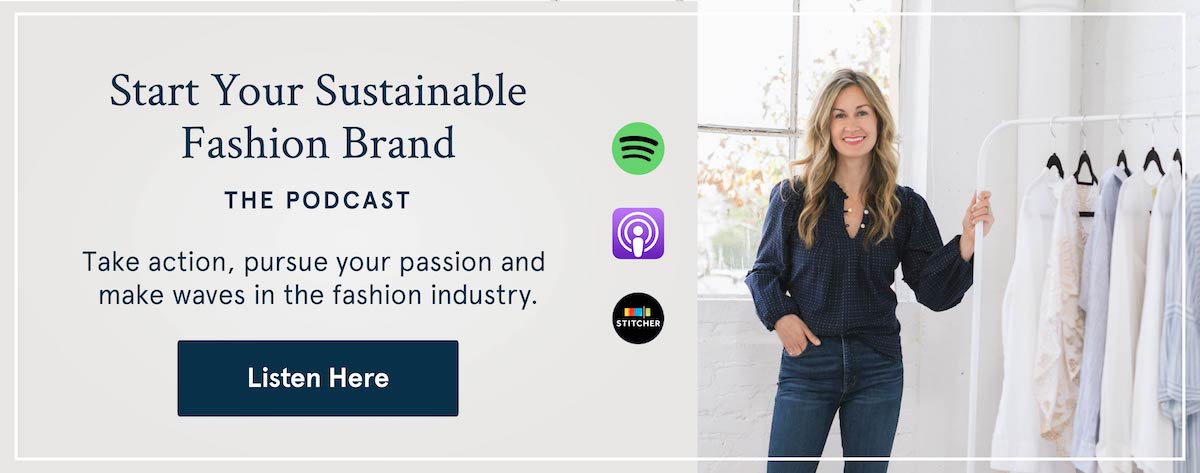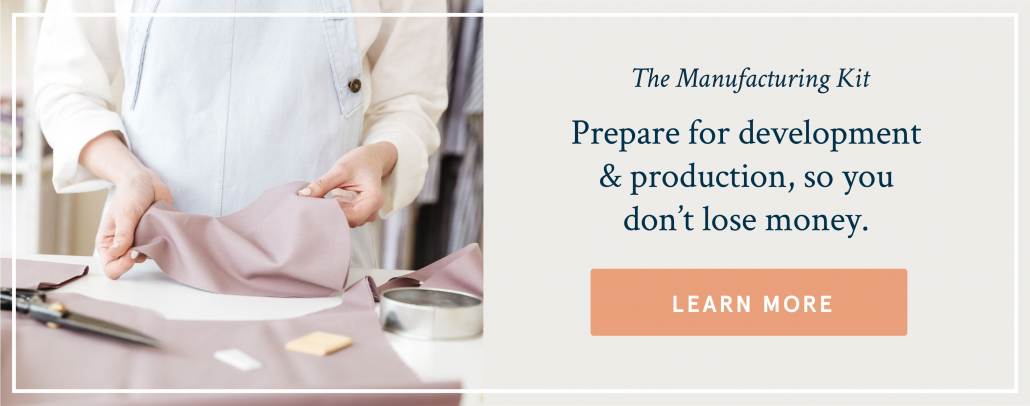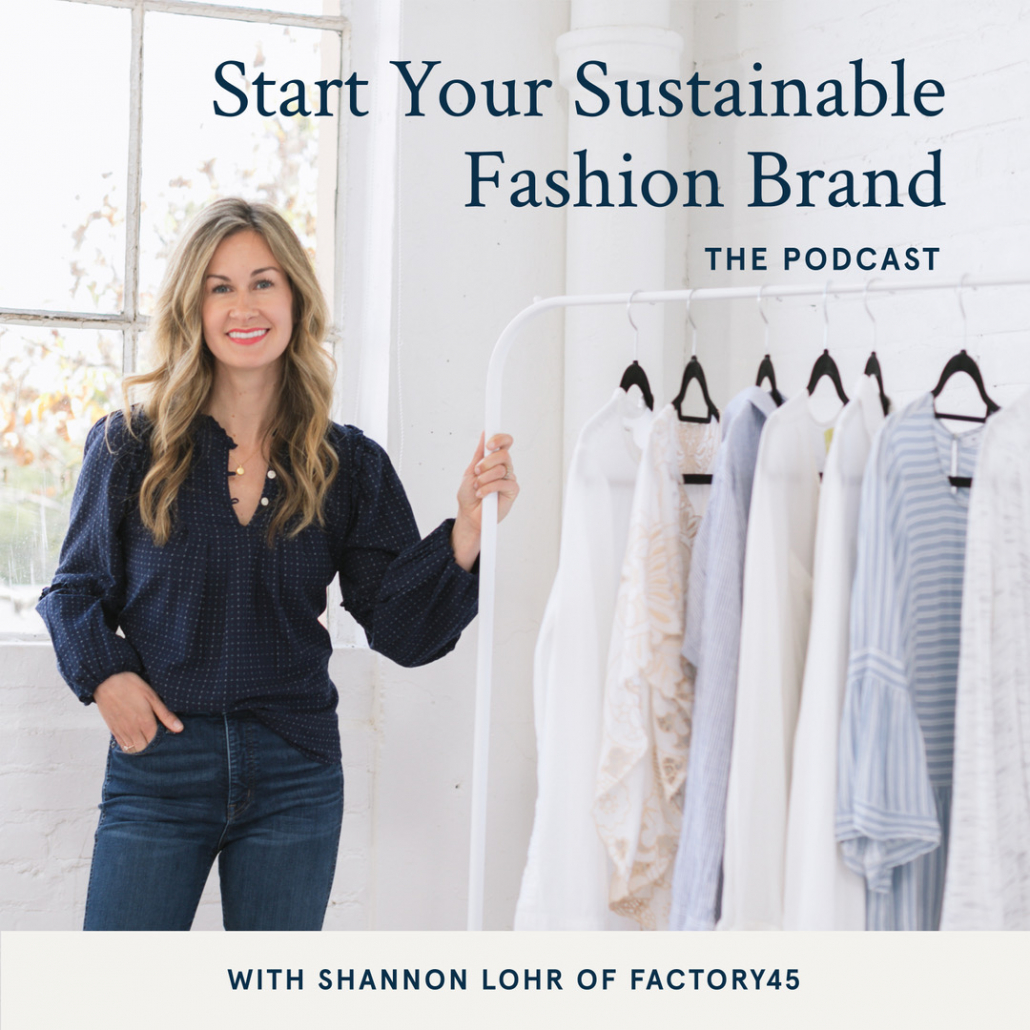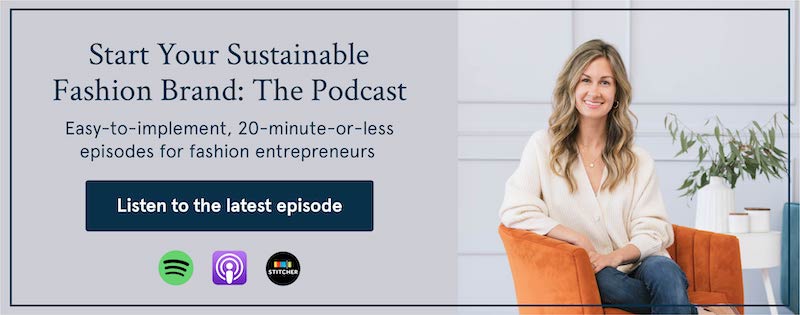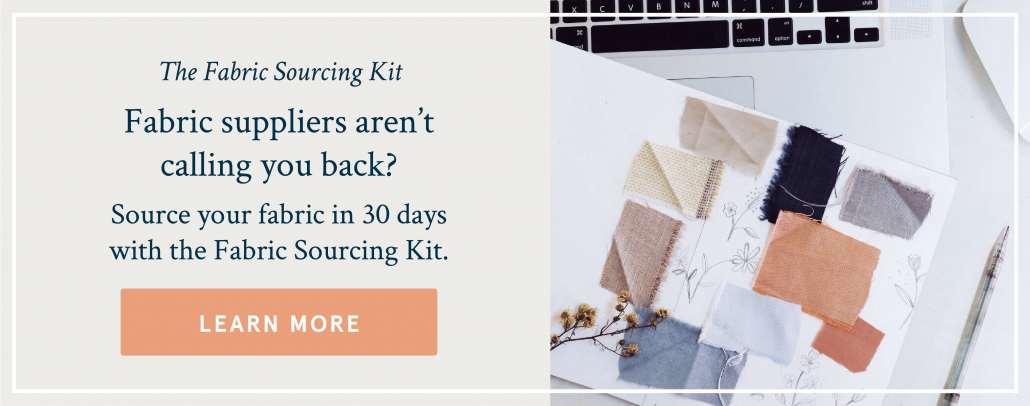Listen on Apple Podcasts | Listen on Spotify
Today we are talking about a topic that is near and dear to my heart — and it’s something that most new fashion founders generally avoid doing. In this episode, I’m sharing four ways to build an audience before you launch your fashion brand.
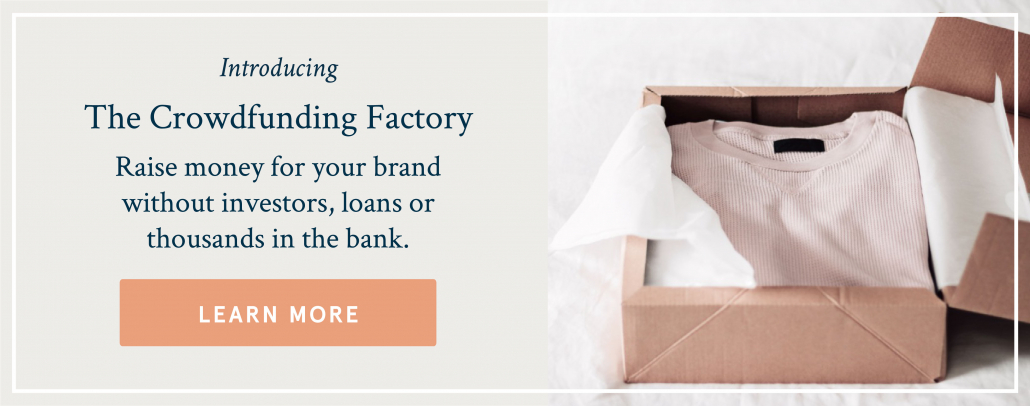
TRANSCRIPT
Today we are talking about a topic that is near and dear to my heart — and it’s something that most new fashion founders generally avoid doing. In this episode, I’m sharing four ways to build an audience before you launch your fashion brand.
If you know me at all you know I love talking about marketing. I also know that, as a creative, most of you would rather be focusing on the product development and design side of building your brand. Too often, I’ve seen the importance of marketing fall to the wayside and I’m here to tell you why it needs to be a priority for a successful brand launch. So before we get started…
I first need you to come to terms with the fact that you have to start talking about your product before you’re ready to sell anything. I know this can be really hard for a lot of people because we’re all worried that other people are going to steal our idea. But unless you have tens of thousands of dollars to invest in a PR team, a marketing agency or influencer endorsements, there’s no other alternative. You have to start talking about your brand and your idea to build an audience before you launch.
Okay, so is everyone on board with that? Hopefully you’re nodding your head. If you don’t focus on marketing as much as you’re focusing on your product, then you won’t have a business — you’ll have a hobby because you won’t be able to sell anything.
The next thing you need to know in building an audience before you launch is who your ideal target customer is. Your ideal target customer is your primary target market and this is the person who you want to be thinking about every time you make a branding or marketing decision.
Before you launch, you need to be able to establish an engaged audience of your target customer. What does that mean? An engaged audience is a group of your ideal target customers who are interested and excited about what your brand has to say and offer.
There are four main ways to build an engaged audience and they can be done at any point in starting or growing your business — and again, not to sound like a broken record, but that means you should be implementing these four things before you even have a product to sell.
The first way to build an engaged audience is by getting in front of existing audiences of your ideal target customer.
What is an existing audience? It’s a brand, influencer, platform or person who has the same or similar ideal target customer as you do and already has an engaged audience that they’ve built up. When you identify those existing audiences, there are a few different ways to get in front of them:
- It could be through strategic partnerships / cross promotion – so let’s say there’s another complementary brand that isn’t a direct competitor, you could co-host a giveaway or contest with them to build your email list and social media followings. So for example, you’re a women’s apparel brand with a target customer between the ages of 45 and 65 and you partner with a jewelry brand with a similar aesthetic that complements your garments and appeals to the same demographic.
- Another way to get in front of existing audiences is through content marketing which I’ll talk about in more detail in a bit.
- It could be podcast interviews (people love hearing the behind the scenes, origin story, etc.).
- It could be doing a sample run with Instagram influencers that help you promote to their audiences.
There are all kinds of different options – only limited by your own creativity – but the point here is creating partnerships and relationships that provide visibility for your brand in front of existing audiences that aren’t your own. This is a great strategy because you’re not wasting marketing time and resources on your small audience of let’s say 25 people in the beginning. Your focus is on getting in front of an existing audience and bringing them back to be part of your own audience.
The second way to build an audience before you launch is to set up a Landing page + opt-in offer.
The goal here is to: BUILD YOUR EMAIL LIST!
You can do this by promoting freebies, called lead magnets, and driving people to your landing page to opt-in for the free gift (it can be a free checklist, short ebook, a guide or something else that provides value to your ideal target customer).
You can use quizzes, challenges and surveys to drive people back to your landing page to opt-into your list.
The bottom line is when you’re thinking about these free offers to entice subscribers, ask yourself: how can you provide value, and how can you build a relationship before you have anything to sell?
The third way to build your following is through word of mouth.
Through this entire process of building an audience online, you want to create a relationship with your audience so they tell their friends about you.
You can do this by nurturing your email list (sending an email at least once a week) and then making a direct ask to tell their friends and doing the same thing on social media.
And the fourth strategy to build your audience that I’m going to talk about today is through content marketing.
When you create content (whether that’s a blog post, a YouTube video, a podcast episode, a TikTok video, a quiz or something else) and circulate it via social media, the goal is to then drive people back to your landing page so they sign up to your email list.
Content marketing is the primary way that brands build audiences of raving fans, so I’m going to talk about it in more detail than the other strategies I mentioned before.
First, there are a few goals of content marketing, in addition to driving people back to your landing page and email opt-in. Those goals are to:
- Build your “Know, Like & Trust” factor
- Listen to your customer and have human-to-human conversations (if you’re a good listener, they’ll tell you what they want to hear and see in your content marketing!)
- Be memorable! That means saying something different or saying something in a different way.
- Show emotion. This goes back to being human and connecting as a human.
- Be persistent and consistent. Keep showing up.
- Look at the content your competitors are creating and do it better or differently.
- Experiment. Double down on what’s working, scrap what isn’t working and always test new types of content.
When we talk about content marketing, there are typically 3 CATEGORIES that we refer to:
- Owned Media
- Earned Media
- Paid Media
For our purposes, we’re going to focus on Owned and Earned Media. Paid media would be content like Facebook ads or Google ads, which I don’t recommend when you’re first starting out, before you have anything to sell and can’t see a direct ROI.
Okay, so what’s Owned Media? Owned media is the type of content marketing that you create and control. Examples are
- Your website
- Your blog
- Your email list
- Your podcast
- Your YouTube channel
- Your social media content (even though you don’t technically own it)
- Your retail display (if selling in person)
What’s Earned Media?
- Press
- Social sharing
- Word of mouth
- Product reviews
- Guest posts
- Guest podcast interviews
To grow an audience online, you must focus on both Owned & Earned Media but you definitely don’t have to do every single strategy under each category.
My advice is to start with either a blog, a podcast or YouTube channel for your Owned Media. Choose whichever platform comes easiest and most naturally to you – if you prefer writing, then start a blog, if you prefer audio then start a podcast, if you prefer video then start a YouTube channel.
And then focus on social sharing, guest posts and guest podcast interviews for your Earned Media. Then, as you start to establish those areas of content marketing, you can experiment with others. Now, just a quick reminder about the questions everyone loves to ask… Can you do this before you have anything to sell?
Yes! Remember, you are giving away free content that entertains, inspires or informs your ideal target customer.
If you do this effectively, then by the time you do have something to sell, your potential customers are already going to love you, want to support you and most importantly, want what you’re selling. And just as a final note and disclaimer… When people get frustrated because their audience isn’t growing fast enough it’s usually because they expect it to happen quickly. This is not an overnight process!
Sure, you can buy email lists and followers and it will look like you have a big audience, but I can guarantee a “bought audience” will not result in customers. Both content marketing and audience building require patience, consistency and persistence above all else. Every single new, organic follower or subscriber is something to be celebrated.
Since 2014, I’ve worked with entrepreneurs all over the globe to build audiences before they launched their sustainable fashion brands. This has resulted in our alumni collectively raising hundreds of thousands of dollars in pre-orders by launching their brands to an audience of customers. If you’re interested in learning more about our process, what we teach and how we’ve become the #1 fashion school for fashion brand launches, you can book a call to learn more. Just go to factory45.co/apply – the link is in the description of this episode.


